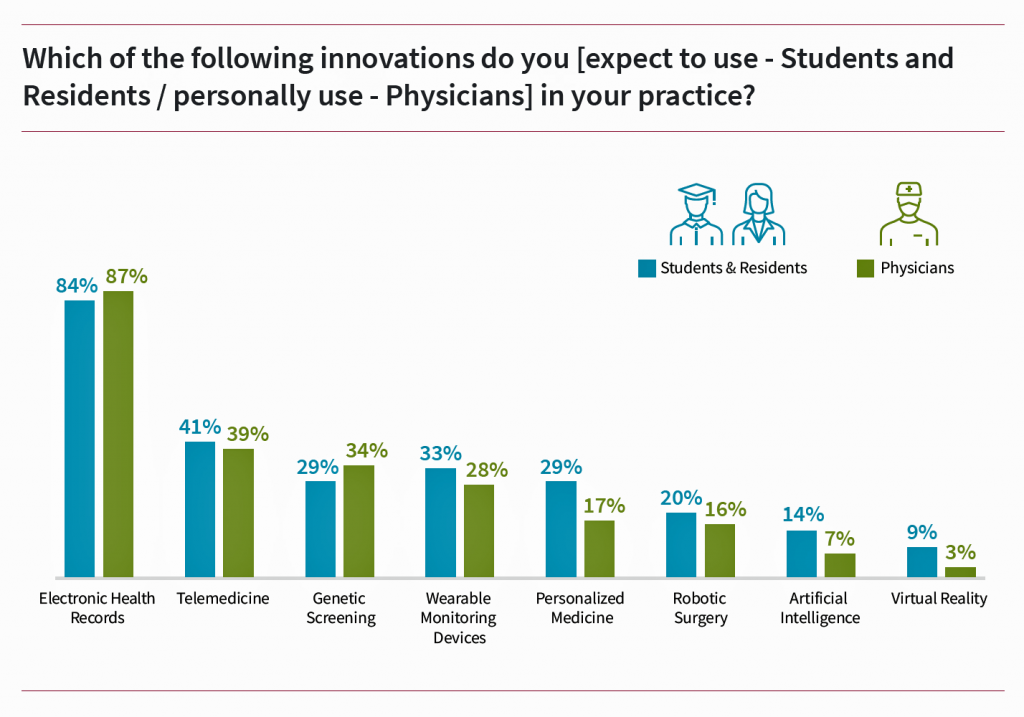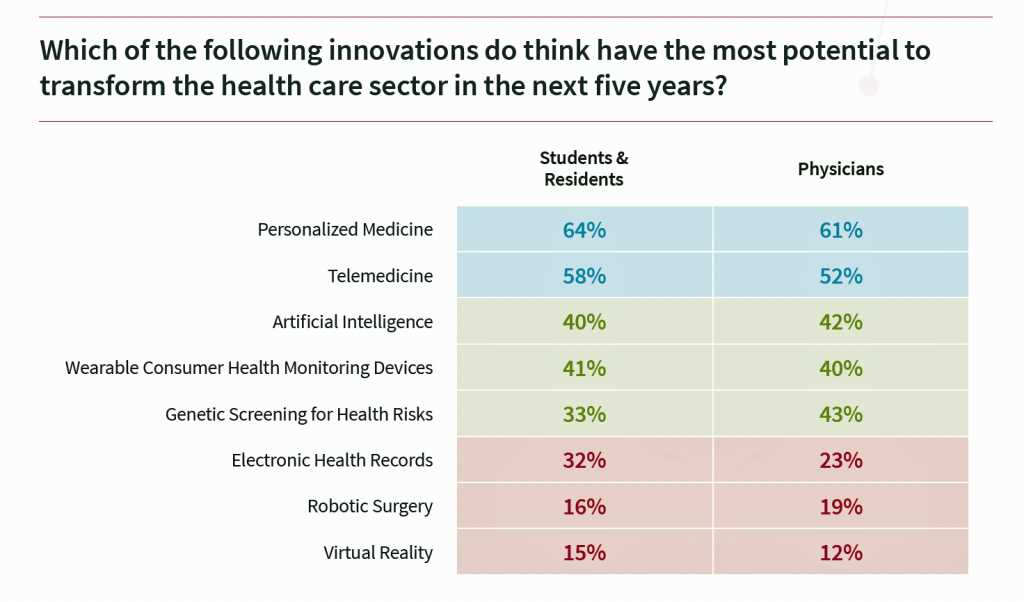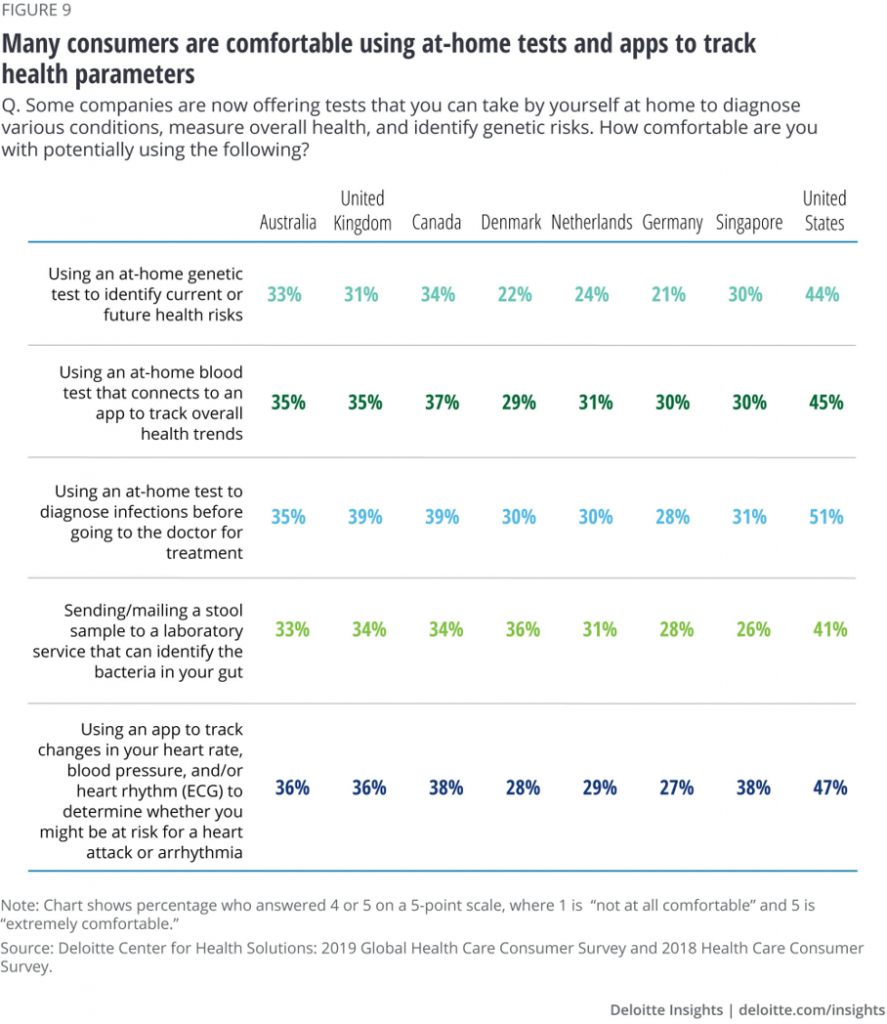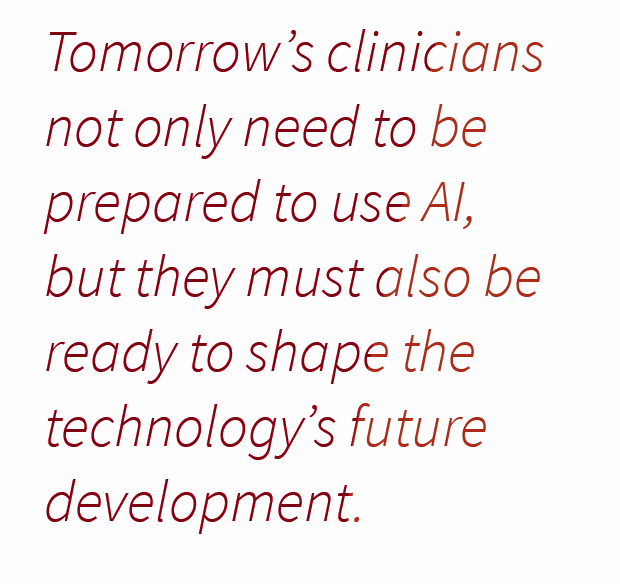 Physicians are evolving as digital doctors, embracing the growing role of data generated in electronic health records as well as through their patients using wearable technologies and mobile health apps downloaded in ubiquitous smartphones, described in The Rise of the Data-Driven Physician, a 2020 Health Trends Report from Stanford Medicine
Physicians are evolving as digital doctors, embracing the growing role of data generated in electronic health records as well as through their patients using wearable technologies and mobile health apps downloaded in ubiquitous smartphones, described in The Rise of the Data-Driven Physician, a 2020 Health Trends Report from Stanford Medicine
Stanford Medicine interviewed 523 physicians and 210 medical students and residents in September and October 2019 to assess clinicians’ perspectives on digital health topics for this study.
The study title citing the “data-driven physician” is based on the key survey finding that doctors are preparing to embrace data, from both traditional sources and new ones — including information generated by patients themselves via wearable tech and remote health sensors — into clinical practice.
The vast majority of doctors are using electronic health records, and four in ten have adopted telemedicine in their workflow. One in three doctors uses genetic screening, and one in four, wearable health devices. Personalized medicine and robotic surgery have been adopted by fewer than 1 in 5 doctors, with AI and virtual reality still nascent technologies in everyday practice.
 Looking to the future, most doctors and med students see big potential in personalized medicine to transform health care in the next five years. Just over half of clinicians view telemedicine as transformational, and another 4 in 10 doctors cite AI and wearable devices as transformational in the next five years. Robotic surgery and VR won’t yield much transformation in health care in the next five years, both current practicing doctors and med students concur.
Looking to the future, most doctors and med students see big potential in personalized medicine to transform health care in the next five years. Just over half of clinicians view telemedicine as transformational, and another 4 in 10 doctors cite AI and wearable devices as transformational in the next five years. Robotic surgery and VR won’t yield much transformation in health care in the next five years, both current practicing doctors and med students concur.
Another issue on which one-half of clinicians, both current and studying, agree is that consumer tech companies and other non-traditional players entering the health care market is a positive development. One in five doctors and one in three students is undecided on this, based on uncertainties for impacts on patient outcomes, physician effectiveness, physician job satisfaction, and costs.
What is certain, the Stanford Medicine report divines, is that physicians beyond 2020 will be operating in a larger, more distributed and complex health care ecosystem, mixing the legacy system of brick-and-mortar hospitals and clinics with virtual care via telehealth, remote health monitoring to the home, and wearable tech on the patient’s body and embedded in her clothing. And on balance, most physicians welcome the value that data from these different sources can yield for diagnosis, treatment and research.
 Health Populi’s Hot Points: Compared with other nations’ health citizens, Americans tend to be more bullish on using at-home tests and apps to track health, as gauged in the survey report, A consumer-centered future of health from Deloitte Insights.
Health Populi’s Hot Points: Compared with other nations’ health citizens, Americans tend to be more bullish on using at-home tests and apps to track health, as gauged in the survey report, A consumer-centered future of health from Deloitte Insights.
Similarly, one-half of consumers expressed demand for digital health technologies in a study from GlobalWebIndex last year. 50% of consumers said they’d welcome the ability to consult with a doctor via phone or video call, 48% liked the ability to communicate electronically via test or social media with the doctor, and 43% favored a wearable device to connect with their smartphone to monitor health.
36% would use a digital health assistant (chatbot) to offer health advice, and 34% a digital health coach to help manage chronic disease or pain.
We’ve entered an era of both the data-driven physician aligning with the data-driven patient. This isn’t an N of 100% on either side of the physician-patient dynamic; it’s an evolving scenario, part of a larger digital ecosystem in which consumers live, work, play and learn.
But weaving the Stanford Medicine study together with the consumer research from Deloitte and GlobalWebIndex shows us greater alignment for digital health adoption between doctors and patients than we’ve seen before this moment.





 Interviewed live on BNN Bloomberg (Canada) on the market for GLP-1 drugs for weight loss and their impact on both the health care system and consumer goods and services -- notably, food, nutrition, retail health, gyms, and other sectors.
Interviewed live on BNN Bloomberg (Canada) on the market for GLP-1 drugs for weight loss and their impact on both the health care system and consumer goods and services -- notably, food, nutrition, retail health, gyms, and other sectors. Thank you, Feedspot, for
Thank you, Feedspot, for  As you may know, I have been splitting work- and living-time between the U.S. and the E.U., most recently living in and working from Brussels. In the month of September 2024, I'll be splitting time between London and other parts of the U.K., and Italy where I'll be working with clients on consumer health, self-care and home care focused on food-as-medicine, digital health, business and scenario planning for the future...
As you may know, I have been splitting work- and living-time between the U.S. and the E.U., most recently living in and working from Brussels. In the month of September 2024, I'll be splitting time between London and other parts of the U.K., and Italy where I'll be working with clients on consumer health, self-care and home care focused on food-as-medicine, digital health, business and scenario planning for the future...